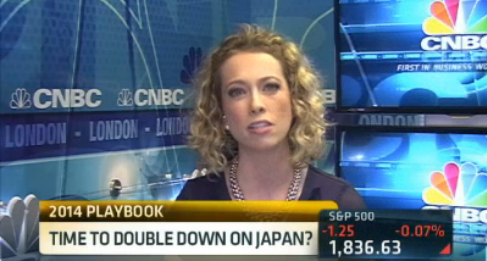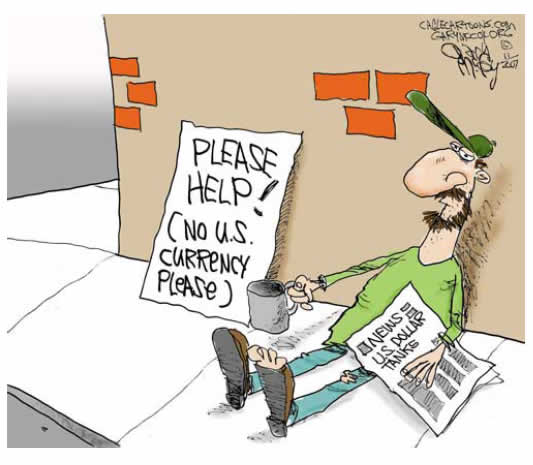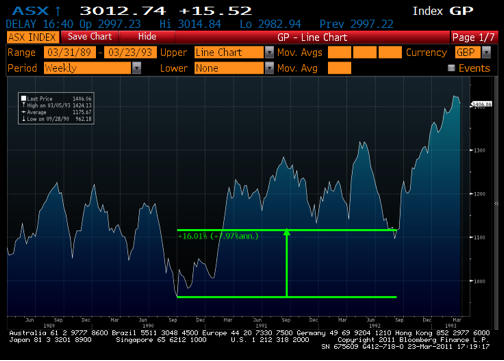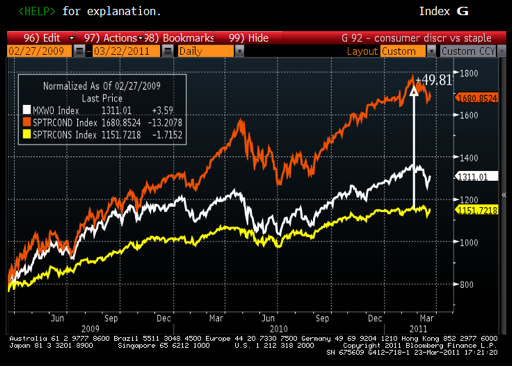There is still much to be decided before EU leaders can claim to have provided a comprehensive and credible plan to end the sovereign debt crisis. The rescue fund itself has met with significant obstacles, with demand in doubt and delays to capital raising leading to question marks over its ability to borrow on behalf of those that can’t. Instead of improving sentiment, it may cause it to deteriorate. Details, commitment, growth, structural reforms and greater consolidation of governance, fiscal policy and politics are needed. This has become a global issue.
Deutsche Bank, Germany’s biggest bank, and Credit Agricole, the largest retail banking group in France, rallied more than 19% over the last week in October after certain ‘positive’ news was announced at EU Summit. Measures included the leveraging of the rescue fund to €1tn, a voluntary default of Greek debt and bank recapitalisation. However, this may involve a dangerous derivative structure with insurance coverage not guaranteed and demands not going far enough.
Delays could hit sentiment, deadline looming
The European Financial Stability Fund (a.k.a. the ‘rescue fund’) was created to borrow on behalf of those countries that found themselves unable to borrow (read Greece, Ireland, Portugal etc). However, Wednesday’s attempt to raise capital met a substantial obstacle – limited demand, leaving the fund itself unable to borrow. The €3bn 10-year bond offering had to be postponed, in the hope conditions would improve but a ‘red flag’ has been raised. If this fund is already having issues, at its current size with a lending capacity of €440bn, how will it manage with demands up to €1tn? Inadequate demand could cause sentiment to deteriorate, worsening the very situation it was meant to improve.
Demand from the East now in doubt
Plans to leverage the current fund to enable this €1tn of firepower seem to be heavily reliant on demand from the likes of China and Japan. This makes their apparent lack of interest in this recent bond offering most worrying. Investors have maintained the situation is too opaque and the risk/reward potential too skewed to the downside.
Dangerous derivative structure
The ‘Special Purpose Investment Vehicle’ which would allow this leveraging to occur has been likened to a CDO – collateralised debt obligation and the instrument that was at the heart of the subprime crisis, by insuring investors against loss. The bonds act as collateral so investors effectively buy junk sovereign debt with a certain level of guarantee from the fund.
The Greek ‘haircut’ has highlighted some of the risks. The ‘writedown’ of debt was structured as ‘voluntary’. It was agreed that private bond holders should offer to write off half of the amount Greece owed them versus a formal, official, enforced default. The latter would be classified as a credit event and trigger any insurers to pay up. However, the former doesn’t. Therefore investors who insured against losses paid a premium for cover but won’t get paid out to offset the losses suffered. The risk of a debt ‘default’ may not always be mitigated.
Doesn’t cover all that is needed
More details are needed to understand how bailout facilities will be implemented and hopes for the first signs of commitment from the IMF, China and Japan were dashed at the G20 Meeting last Thursday and Friday. Moreover, the recapitalisation of the banks, which was set at €140bn will need to be increased dramatically. The IMF already put the level at €200bn, with analysts advising a number nearer €275bn.
Finally, the fund does not compensate for what the EU really needs: growth, structural reforms and greater consolidation of governance, fiscal policy and politics. The EU’s jobless figures are the highest they’ve been since the launch of the euro. Draghi may have put the focus back on growth by cutting interest rates, in a move that surprised the markets, from 1.5% to 1.25% but admitted growth forecasts are likely to be downgraded so the EU economy will remain fragile for some time. Accounting for approximately 24% of global GDP and with lower demand hitting export-oriented Asian countries, as for example Taiwan expands at its slowest rate for 2 years.
This is a global issue.











